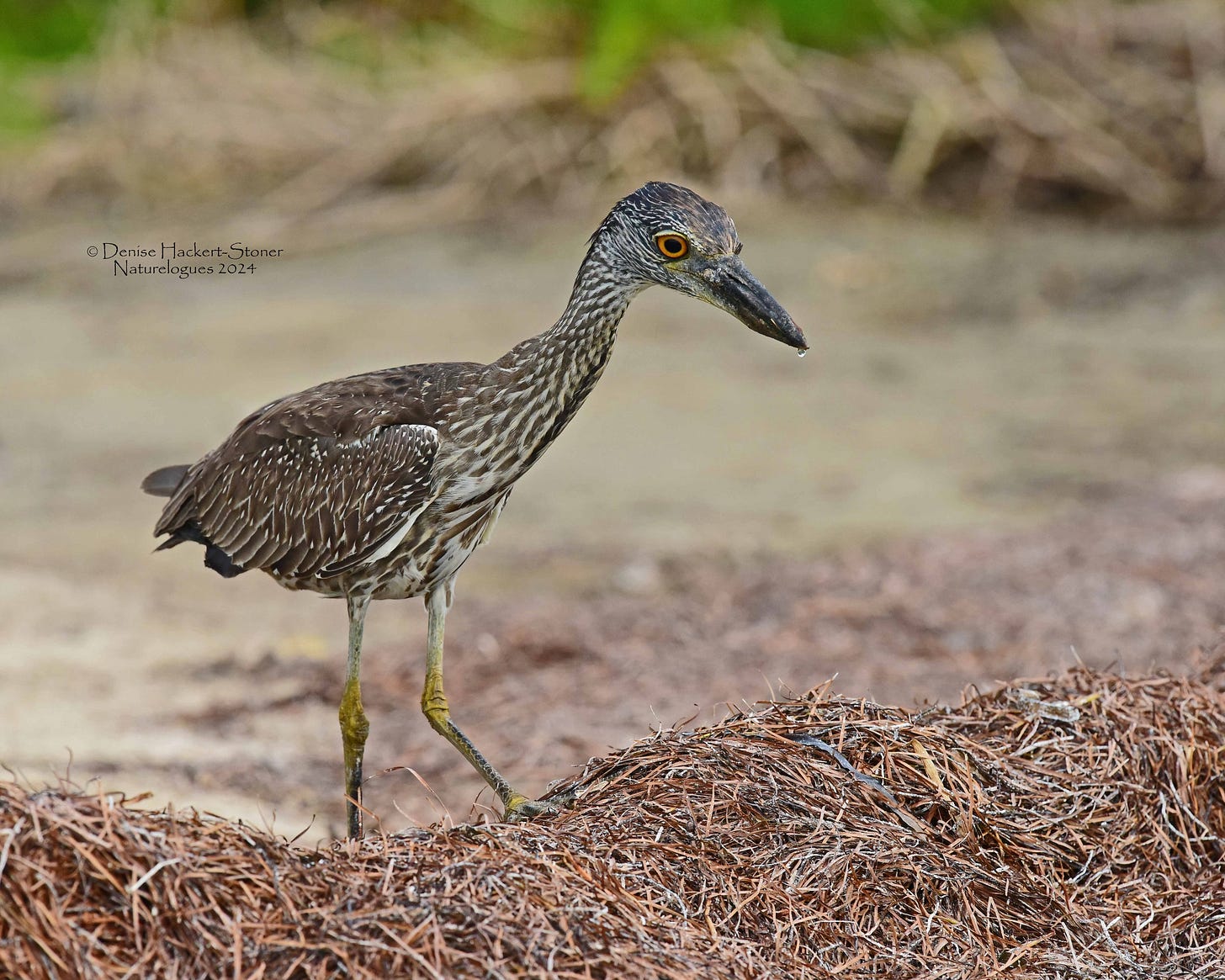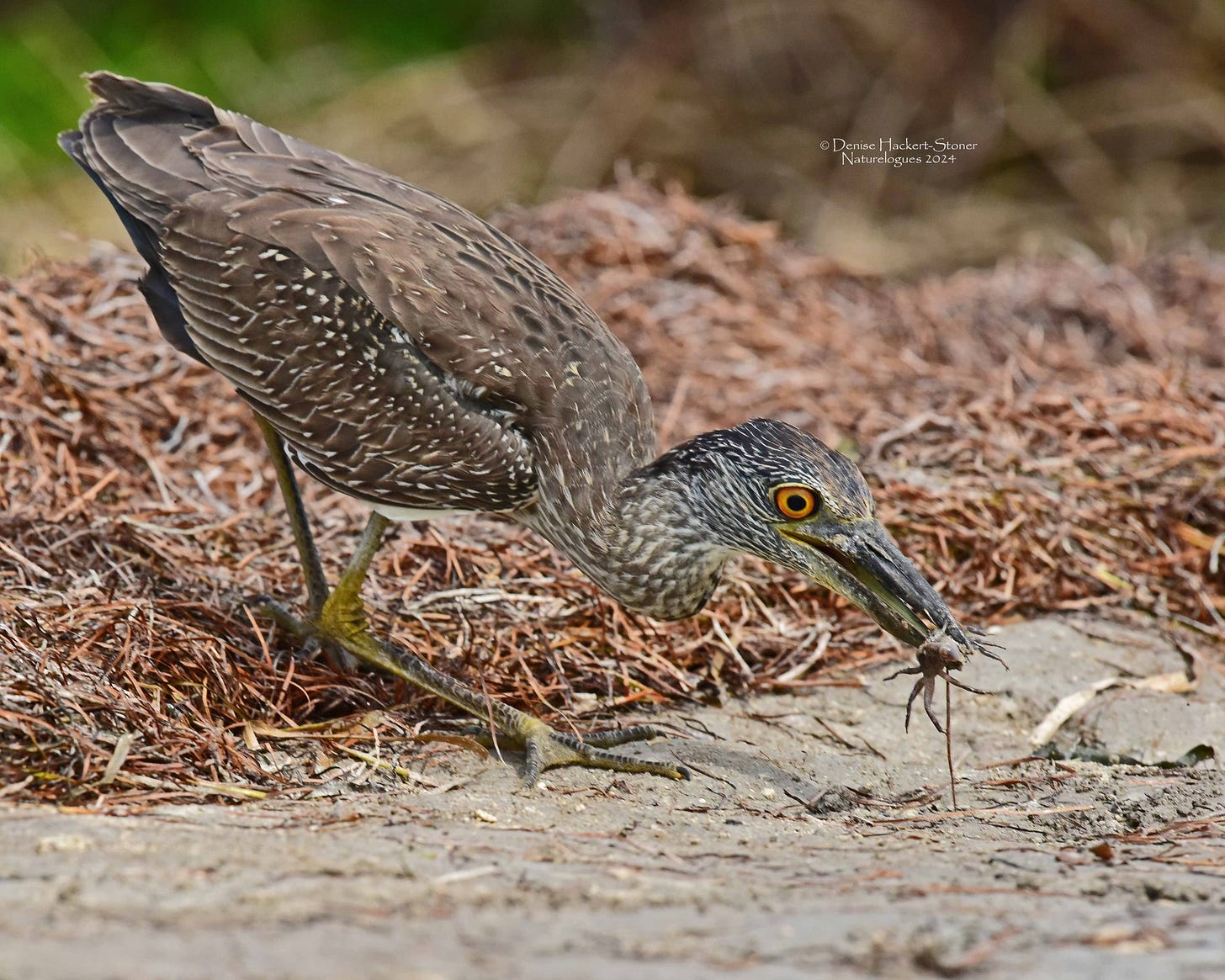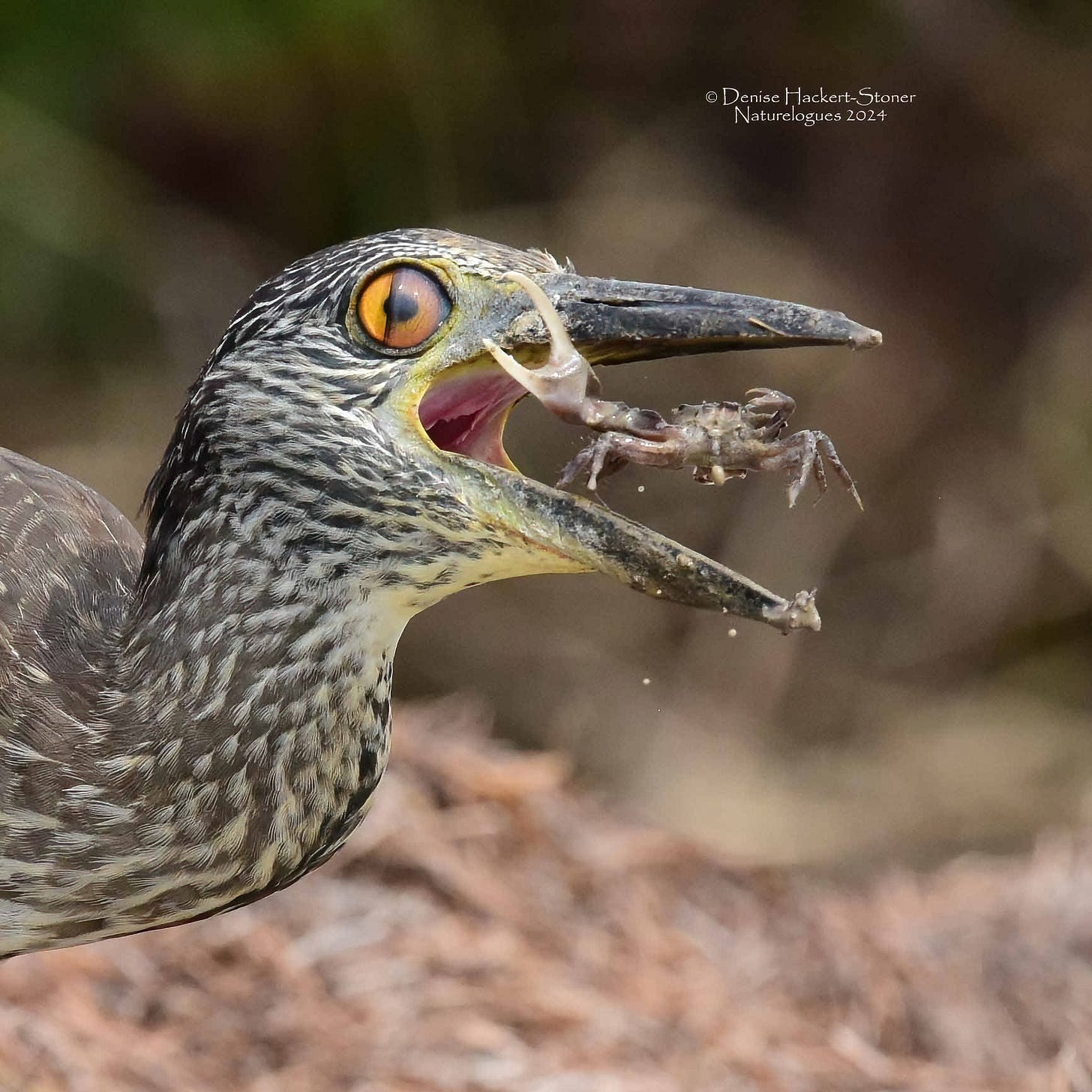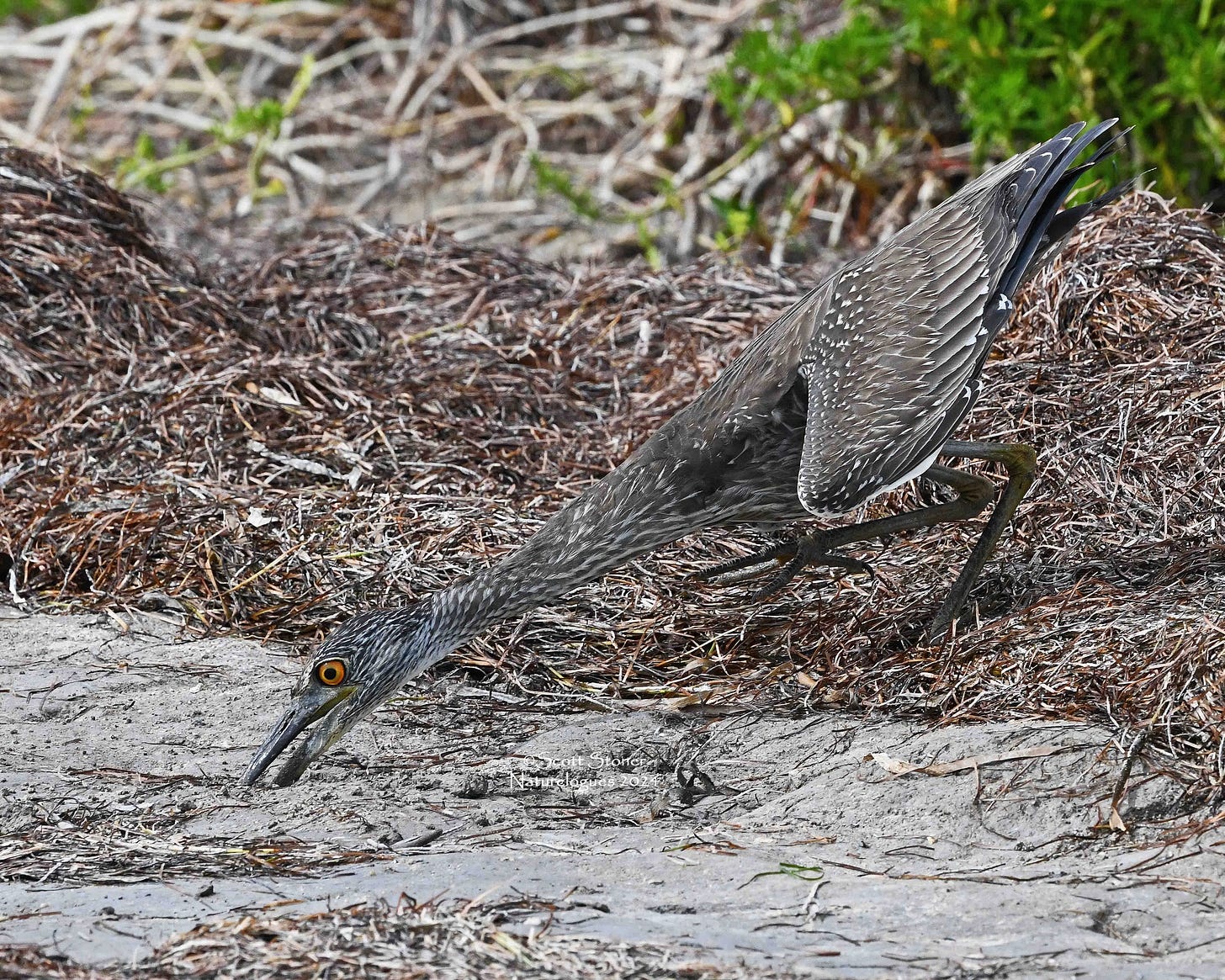The night heron stands. As still as the mangrove trees along the muddy shore, it stands. I snap a few pictures, and I can’t help but notice the intensity of this young bird’s eyes, which seem to be staring at some unremarkable spot on the ground a few feet ahead.
After a few minutes of what I would call “active staring,” the bird slowly moves its neck forward, then, ever-so-slowly, lowers its head toward that spot of interest.
Then, with amazing speed, the large beak strikes. When I can focus again, I see a fiddler crab caught firmly in the night heron’s beak. After a minute or so, the heron has managed to swallow the crab, whole and alive.
It stands still for a time, while, I presume, it works the crab down its long throat, then begins to stare at another seemingly unremarkable spot on the ground, as the cycle of watching and feeding begins again.
Since that fascinating afternoon on the muddy beach along Florida Bay in Everglades National Park, I have learned that Yellow-crowned Night Herons are focused on crabs. Crabs and their inland cousins, crayfish, are the only food that these herons eat. They have extremely strong stomach acids that dissolve shells. So on these beaches and in the salty marshes that border them, these herons are nourished only by crabs. And they know where to find them. In their way, they taught me where to find them as well. I was curious about these seemingly random spots the herons were so focused on, so I took a closer look. There in the marsh grass I noticed something not random at all. Holes. Small crab holes. Once I was aware of them they were everywhere. In the grass, in the mud of the beach, all around.
It’s the holes that the night heron watches, waiting so patiently, until the crab inches toward the surface, and then the bird strikes.
Once aware of the crab holes, I wanted to see a crab not lodged in the beak of a night heron. I scanned the holes on the beach, and they all appeared empty. I knew that if I were to approach a hole my presence would only drive the crab deeper. So I decided to try to become a night heron. I focused on one hole. I stood very still. I waited. For a very long time. I’m not a very good night heron. I grew fidgety and almost gave up. Then suddenly, a large claw appeared at the opening of the hole. This was a male Fiddler Crab, and he began waving that claw back and forth.
Claw waving is used both as a way of attracting females and warning away other males. If needed, it can be used as a weapon to defend territory. I’m not sure what this particular male was waving about. I didn’t see any other crabs around, male or female. Was he waving me off? Who knows? But the encounter made me realize both the risks of being a crab who can’t live in a hole forever, and the deep need the heron has for nourishment. And so continues the hiding and the hunt, the lives lived and lost, the thriving and the starving, the thin line between life and death, and the wondrous balance of nature.
To learn more about the amazing life of the Yellow-crowned Night Heron Click here.
And this article has some interesting facts about Fiddler Crabs.













Great pictures, Denise!
What a wonderful lesson of patience and awareness (mindfulness??!!) you have woven into a beautiful story of the cycle of birth/death/in-between. That doesn't mean that I am signed-up to go birding this week but Nature inspires such awe in me that I will go birding (sometime in the warm weather) to wait, watch, listen and learn. Patiently. Again and again. Always something new to me, thanks to your insight. Blessings, Christina